Affiliate links on Android Authority may earn us a commission. Learn more.
LG Wing hands-on: A new kind of dual-screen (Video!)
Update: The LG Wing is available now from the three big carriers in the United States. You can grab it from Verizon, AT&T, and T-Mobile. As far as deals go, T-Mobile has the best one at the moment with a stellar buy-one-get-one-free offer (contingent on you signing up for a new line of service). Verizon has a similar deal but you don’t get the second one totally for free.
If you just want to buy outright, Verizon and T-Mobile sell the phone for $999, while AT&T sells it for $1,049. So far, there is still no way to get the LG Wing in an unlocked state.
In the past few weeks, we’ve seen a slew of devices with weird and wonderful new form factors. We’ve seen more traditional foldable devices like the Samsung Galaxy Z Fold 2, a new dual-screen experiment in the form of the Microsoft Surface Duo, and now, LG is getting in the game with a phone that physically swivels to reveal a second display.
This is the LG Wing.
Wait, swivel how?
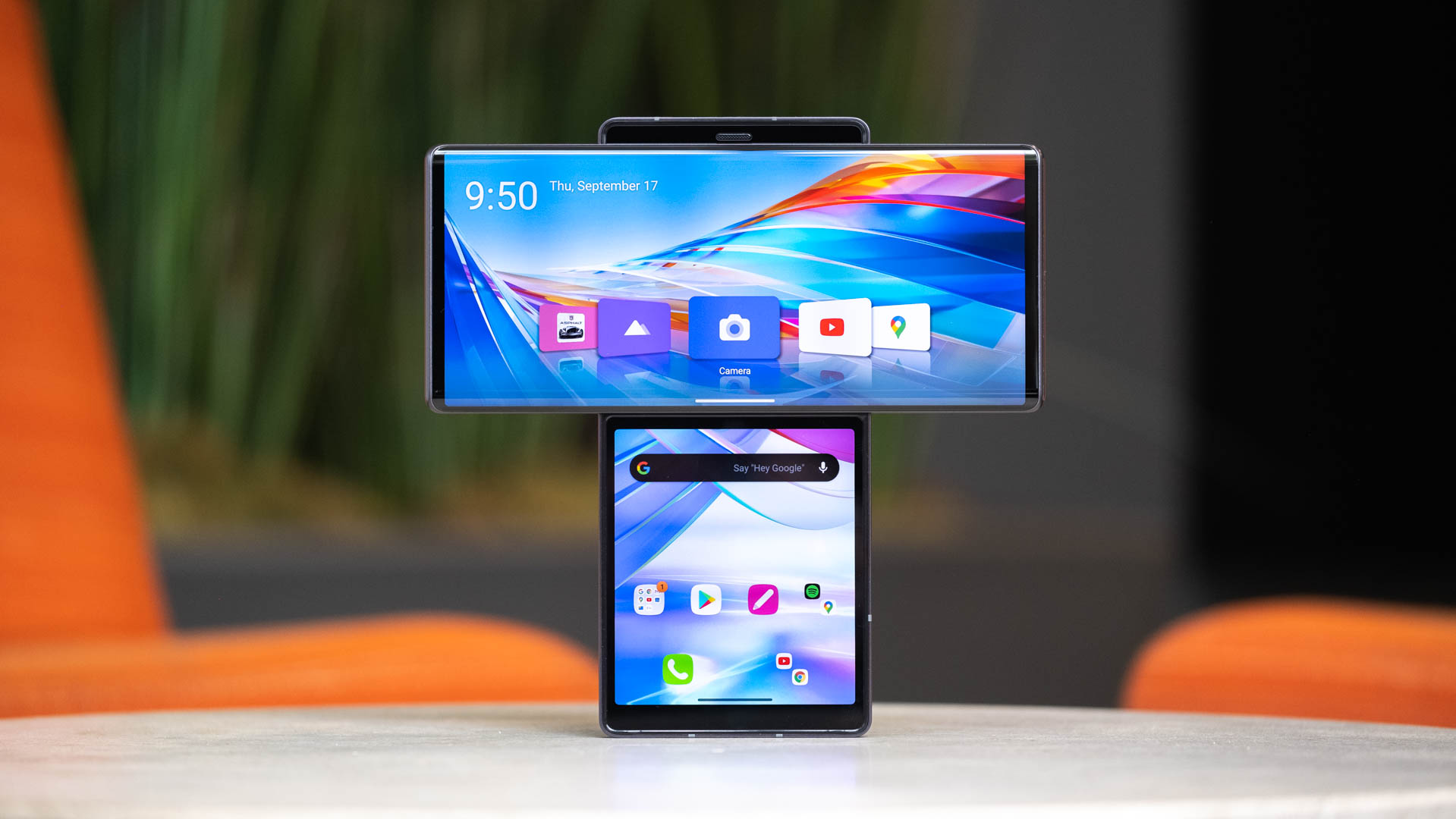
The LG Wing can physically rotate its display 90 degrees, resulting in a landscape-oriented display up top with a smaller square-shaped display underneath. The top display is much thinner than the back half of the phone which holds all the components, leaving just enough room for the curved panel. The top panel is a 6.8-inch OLED with a resolution of 2,460 x 1,080, and the bottom display is a 3.9-inch OLED with a resolution of 1,240 x 1,080.
LG created a special interface to handle the two displays when the phone is swiveled open. When you flip the main screen out, it turns into a carousel of apps that you can select from. You’re able to change which apps appear on this display and which appear on the bottom, and you can open apps on each display individually. LG also included an option to launch two apps at once, with one app on the bottom display and one on the top display. Because of the form factor of these displays, only about half of the apps I downloaded work on the bottom display. That being said, this is still non-final software and more apps may work in the production version of the phone.
In the examples above, I set the phone to launch both YouTube and Chrome at once, as well as Spotify and Google Maps. This works similarly to how the Surface Duo handles two apps, where apps retain positioning if you close the phone and then reopen it.
If you’re a rideshare driver or delivery driver, I could see the LG Wing being exceedingly useful for long driving sessions. I’ve seen plenty of Uber drivers who have separate apps for navigation and music or phone calls, and the LG Wing can do both at once. Pretty nifty.
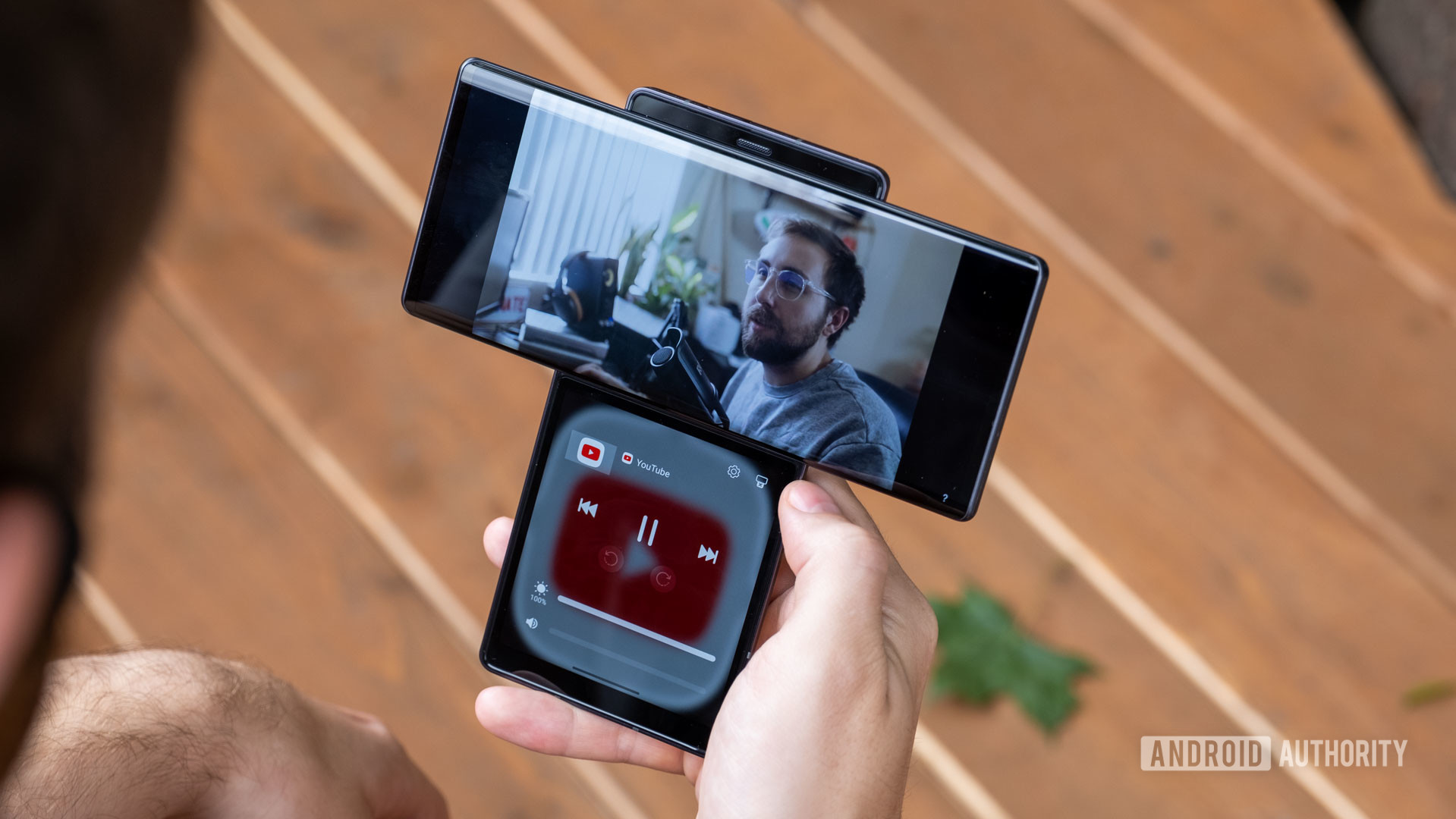
Some apps like YouTube also have special navigation interfaces when watching content with the display in landscape. This allows you to stay immersed in the primary content and make adjustments like brightness or track positioning without interrupting the main display. It’s not life-changing, but it’s a cool feature that makes it a bit more interesting to use. It also shows LG put a lot of thought into how people will use the device.
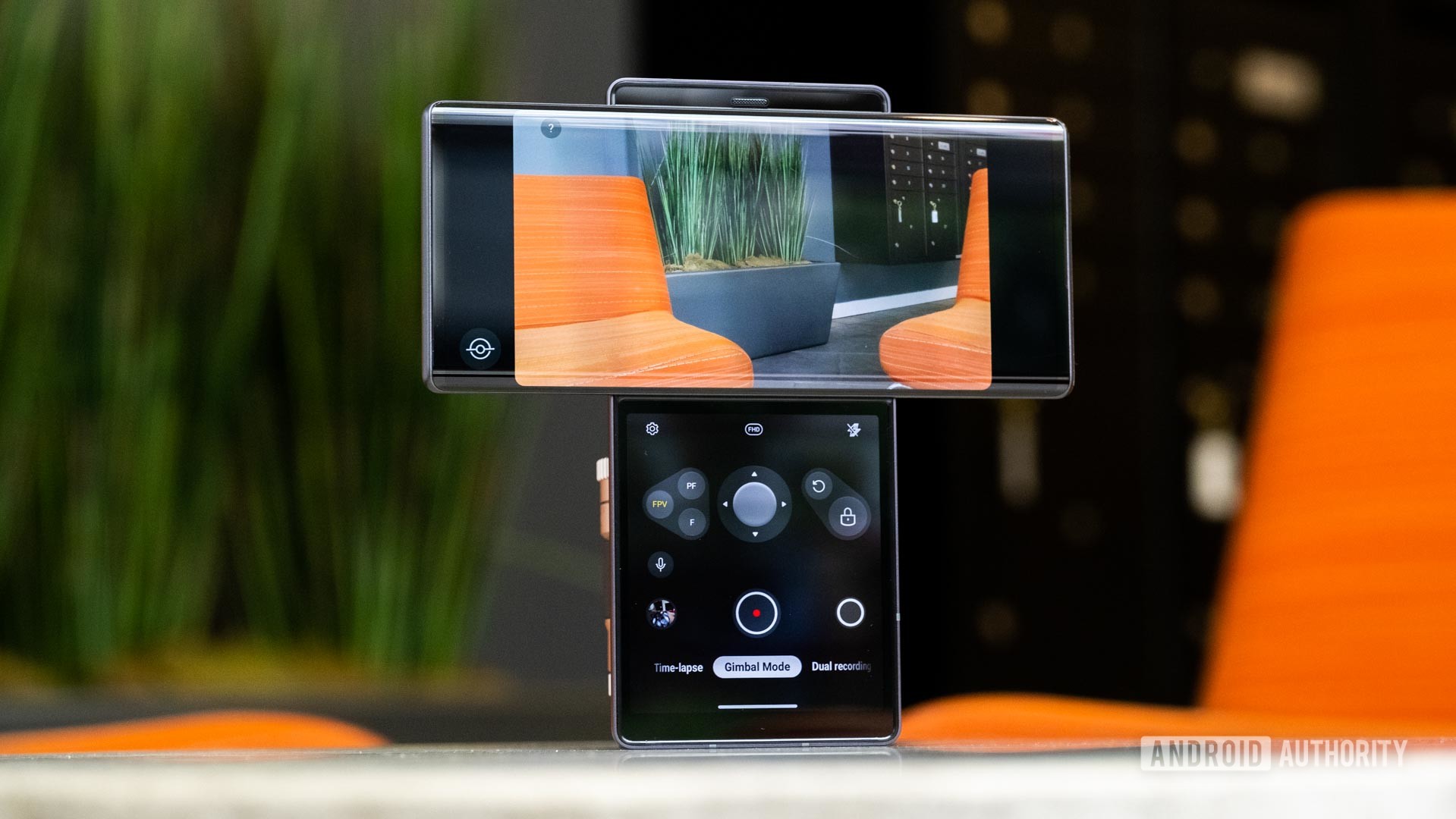
LG has also created some special camera modes that take advantage of the phone’s unique form factor. There are two wide-angle cameras on the LG Wing: one landscape and one portrait. That gives the Wing the ability to shoot landscape video while swiveled open. LG noticed this felt quite a bit like holding a gimbal like the DJI OM 4 and added some special software to make the phone operate like one. In the example above, you can pan around with the joystick and use various modes like a horizontal lock that makes the phone feel like it’s on a real gimbal. The phone does this by cropping in on the sensor to allow digital panning alongside electronic image stabilization.
There are probably several other ways you can take advantage of this unique form factor, and we’re still finding new use cases as we play with the device. Stick around for the full review where we’ll explore these use cases in more detail.
Does it feel like a normal phone?

When closed, the phone is only a bit thicker than your average smartphone. It’s 10.9mm thick, compared to the Samsung Galaxy Note 20 Ultra’s 8.1mm. That extra space is required to allow for the hinge mechanism to work correctly, but honestly, it doesn’t feel unwieldy. When opened, the bottom half is about as thick as a device you’d see today. So really, you’re just adding thickness in the form of that extra display up top.
On the bottom, you’ll find a USB-C port and a speaker. The right side has a power button and volume rockers, with the left side housing the SIM card and microSD tray. On top, you’ll find a pop-up selfie camera. The speaker sounded quite tinny on my device, but again this is a pre-production model so we’ll have to see if the production model of the device is any better.
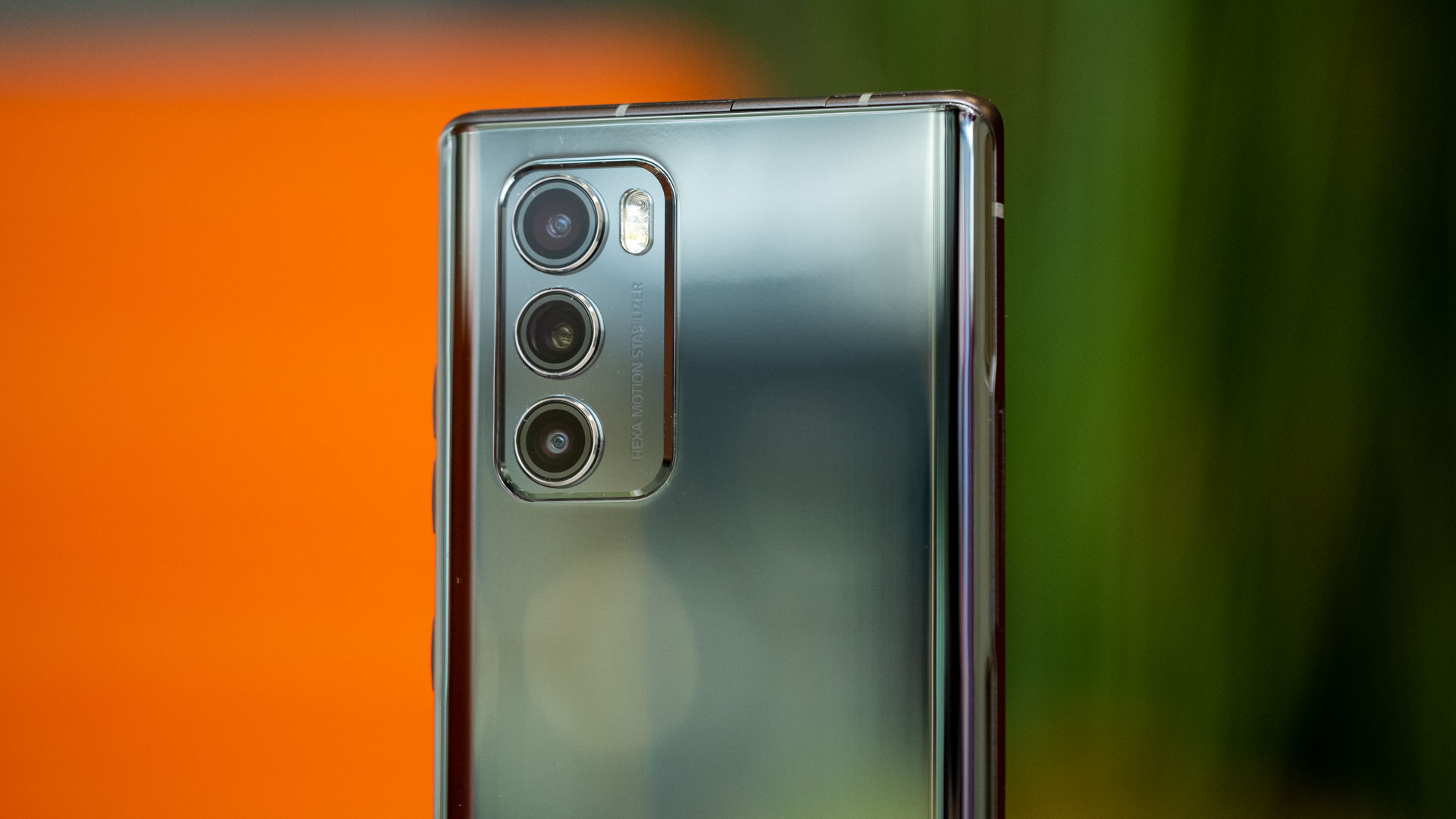
The LG Wing sports three cameras on the rear. The back sensors include a 64MP primary camera, a 13MP ultra-wide camera, and a second 12MP ultra-wide camera used for the gimbal mode in video. The second sensor is rotated 90 degrees to maintain landscape orientation while using the gimbal mode since you are still holding the phone in portrait orientation. The pop-up selfie camera comes in at 32MP.
All in all the LG Wing seems like a fairly standard LG phone before you flip it out. But you might be sad to see that LG hasn’t included a headphone jack in this model. The company made a point to reassure us that this was a one-time thing, and the lack of a jack on this device wouldn’t influence whether it puts it in other phones.
Specs
| LG Wing | |
|---|---|
Display | Main: 6.8-inch OLED 2,460 x 1,080 resolution 20.5:9 screen ratio 60Hz refresh rate Secondary: 3.9-inch OLED 1,240 x 1,080 resolution 1.15:1 screen ratio 60Hz refresh rate |
Processor | Qualcomm Snapdragon 765G |
GPU | Qualcomm Adreno 620 |
RAM | 8GB |
Storage | 128/256GB Expandable with microSD card (up to 2TB) |
Battery | 4,000mAh battery Quick Charge 4+ Wireless charging |
Cameras | Primary: 64MP sensor, ƒ/1.8 aperture, 0.8μm pixels OIS, 78-degree FoV Secondary: 13MP ultra-wide sensor, ƒ/1.9 aperture, 1.0μm pixels, 117-degree FoV Tertiary: 12MP ultra-wide sensor, ƒ/2.2 aperture, 1.4μm pixels, 120-degree FoV, Gimbal Motion Camera Front (pop-up): 32MP sensor, ƒ/1.9 aperture, 0.8μm pixels |
Connectivity | 5G (both mmWave and Sub-6) Wi-Fi 5 Bluetooth 5.1 NFC |
Durability | IP54 certified Protected from limited dust ingress Protected from water spray from any direction |
Operating System | Android 10 |
Audio | LG 3D Sound Engine No 3.5mm port |
Dimensions and weight | 169.5 x 74.5 x 10.9mm 260g |
Colors | Aurora Gray, Illusion Sky |
LG Wing: Full review is coming soon
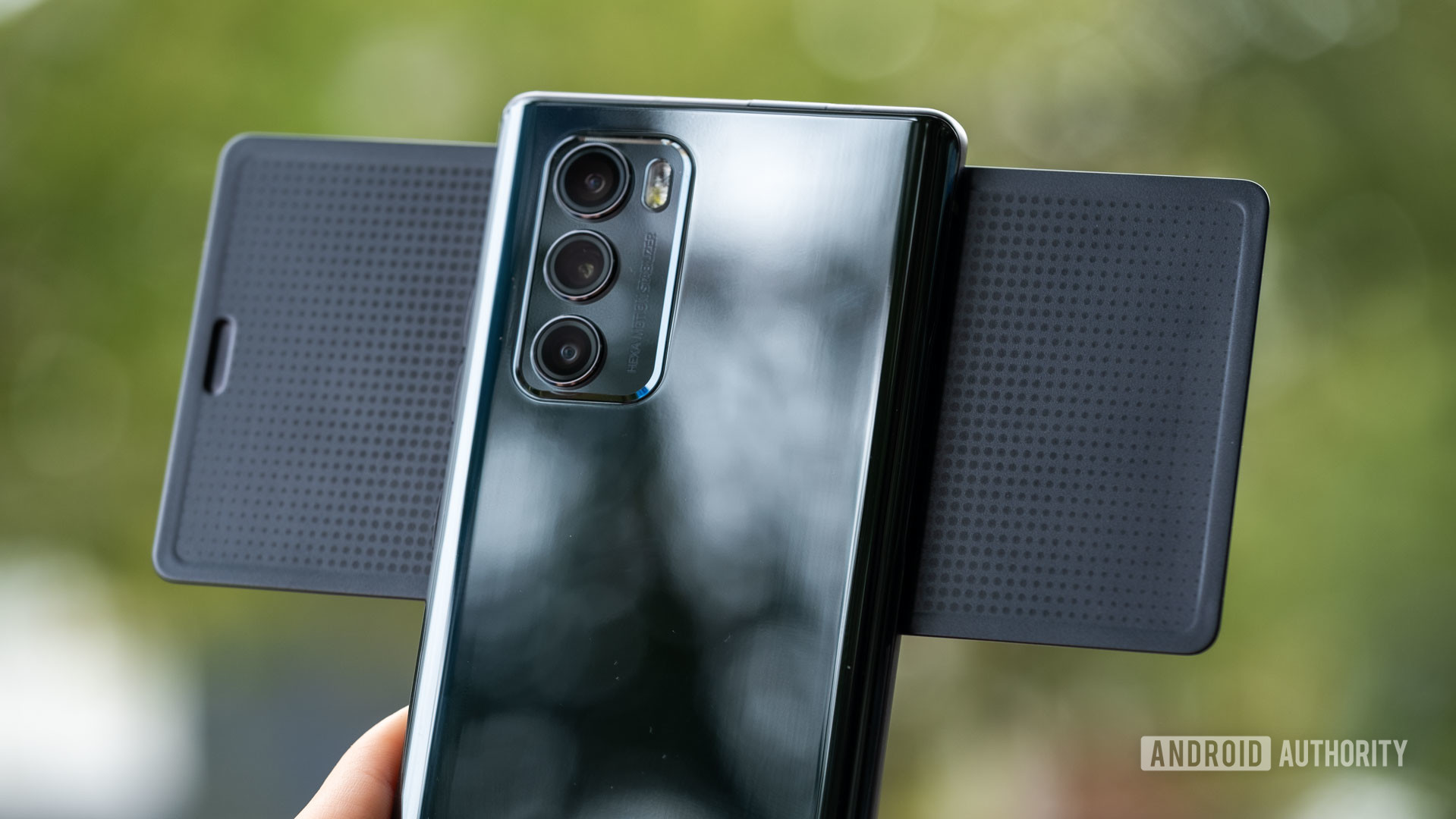
The LG Wing is an interesting addition to the selection of truly weird devices we’ve recently had our hands on. The foldable and dual-screen device categories are growing quickly, and it’s great to see more companies imagining how we’ll interact with different form factors in the future.
LG hasn’t disclosed full pricing or availability for the Wing just yet, but it mentioned that it would come in around $1,000 and would come to Verizon first, with AT&T and T-Mobile coming after.
Our full review of the LG Wing is coming very soon, so stay tuned!